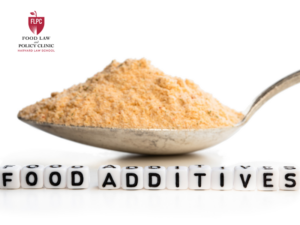Published by Herald-Mail Media on October 23, 2017. Written by Jeff Semler, an Extension educator specializing in agriculture and natural resources for the University of Maryland Extension.
Food waste is a bigger problem than production shortfalls at a time when I often hear, “How are we going to feed 9 billion people by 2050?”
The U.S. alone wastes 160 billion pounds of food—nearly 40 percent of food produced in the country—annually.
A report from the Natural Resources Defense Council and Harvard Law School’s Food Law and Policy Clinic says Americans are prematurely throwing out food, largely because of confusion over what expiration dates mean.
Most consumers mistakenly believe that expiration dates on food indicate how safe the food is to consume, when the dates actually aren’t related to the risk of food poisoning or foodborne illness.
The issue recently came home to roost for me. We had an open house at one of our research and education centers, and we had some milk left over. I was tasked with giving it away. When I took it to the first place, I was informed they couldn’t use it all before the sell-by date passed. I reminded the person it was a sell-by date, not a use-by date. She then related she was aware of the difference, but if inspectors paid a visit and found the out-of-date milk, she could get in trouble.
Here is another incidence where a government official is guilty of throwing the baby out with the bath water. If anyone should know the distinction between the two dates, it should be someone from the health department.
Confusion over the meaning of dates applied to food products can result in consumers discarding wholesome food.
In an effort to reduce food waste, it is important that consumers understand that the dates applied to food are for quality, not safety. Food products are safe to consume past the date on the label, and regardless of the date, consumers should evaluate the quality of the food prior to its consumption.
How is the average consumer supposed to know? Here is a very good explanation from Bob Brackett, Ph.D., director of the Institute for Food Safety and Health at the Illinois Institute of Technology and IFT:
- Use-By: This label is aimed at consumers as a directive of the date by which the product should be eaten; mostly because of quality, not because the item will necessarily make you sick if eaten after the use-by date. However after the use-by date, product quality is likely to go down much faster and safety could be lessened.
- Sell-by: This label is aimed at retailers, and it informs them of the date by which the product should be sold or removed from shelves. It does not mean that the product is unsafe to consume after the date. Typically, one-third of a product’s shelf life remains after the sell-by date for consumers to use at home.
- Best-by: This is a suggestion to the consumer on which date the product should be consumed to assure ideal quality.
Brackett also points out that smell and taste are not always good indicators of whether a food is safe to eat. Foul smells are more indicative of poor quality, not necessarily potential food poisoning.
While I am not advocating you ignore dates, I suggest you use a little common sense and start reducing food waste in your home.


